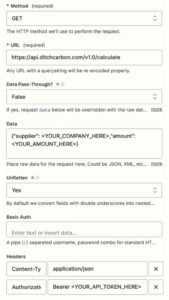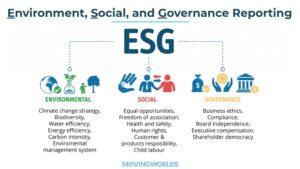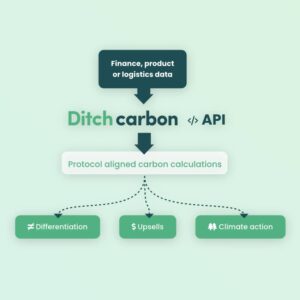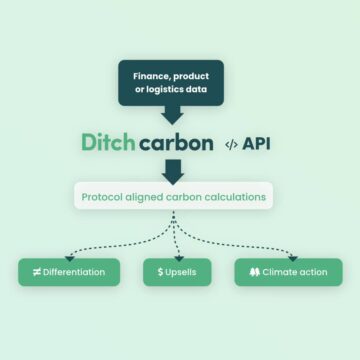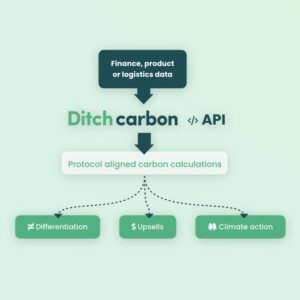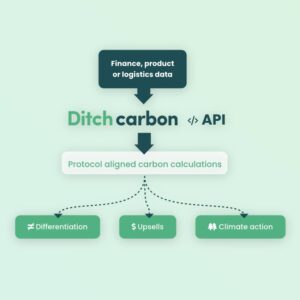
With all this in mind, it’s obvious that tail spend puts both your climate goals and your cost savings at risk. Tackling this rogue spend calls for a tail spend management plan, which looks at your total company spend, not just the big stuff.
Here’s how to tackle your company’s tail spend in just a few easy steps.
Identify tail spend
Step one is obviously to work out what your company’s tail spend actually comprises. Is it last-minute trips to get paper when the printer runs out? Is it coffees that employees buy for clients when they attend a meeting? Has a piece of software auto-renewed and therefore not gone through the proper procurement teams and channels?
Once you establish what your company’s rogue spends actually are, you can start to tackle them.
Make it easier for employees to report spend
A lot of tail spend occurs either because employees don’t know where to go to get sign-off for spending or the process is too long, making it incompatible with last-minute purchases.
By streamlining internal processes, you can make it easier for employees to request sign-off for and report spending and therefore have a better chance of catching all purchases.
Look out for non-compliance
Establish where non-compliance is occurring and whether any individuals, in particular, are responsible for the majority of tail spend. If there are a few key employees purchasing outside of the regular procurement channels, remind them of the procurement procedures in place.
If the tail spend continues regardless, consider techniques you could use to incentivise employees to use the proper channels, even if it means penalties for those who don’t.
Use technology to support your efforts
AI and automation can not only make it easier for your employees to report their spending, but also for you to manage it. Automated systems take over procurement processes that are subject to human error while also reducing the manual workload for your procurement teams.
Imagine you run a business that requires regular inventory orders. You can use an AI system which automatically re-order stock when needed, to avoid you running out of key products. If this was left to an employee, there’s a chance they’d leave it to late to place the order and turn to a more expensive/less eco-friendly to source the product or something similar instead.
Outsource your tail spend management
If your procurement team doesn’t have the capacity to manage your tail spend, you can outsource it to an external company that will come in and streamline your procurement processes.
Identify key suppliers
If you want to make sure your company isn’t at risk of using suppliers that are too expensive or don’t fit your sustainability or ethical priorities, establish a list of pre-vetted suppliers that your employees or procurement team can choose from.
Not sure which suppliers take their environmental impact seriously? You can use our carbon calculator and other resources to find out.
Tackling your tail spend doesn’t have to be too difficult, but it is a must if you’re looking to reduce both your costs and your carbon emissions. Start by identifying where this tail spend is occuring, and implement a detailed tail spend management plan to get a hold of your rogue spending.
Tackling Huge Tail Spend Supply Chain Emissions
Financials aside, the elephant in the room when it comes to tail spend is the carbon emissions associated with it. Leadership teams work towards net-zero targets, but all too often overlook the fact that the vast majority of a typical company’s emissions are Scope 3, meaning they come from purchased goods and services.
If you’re not adequately keeping track of tail spend, you’re not able to accurately measure your Scope 3 emissions.
So, what should procurement practitioners do? It’s natural to want to engage with the biggest suppliers, as they are likely to be the largest emitters in the supply chain. However, changing your largest suppliers can be a lengthy and painful process, especially for those in complex manufacturing.
Not to mention that while your big suppliers will always be on your radar, failing to tackle indirect spend lets those smaller suppliers off the hook.
Consider how procurement professionals integrated diversity targets or cyber security audits in the past and consider how you can do the same when moving suppliers. Tail or indirect spend can have a short-term impact. You may not be able to move to a minority-owned strategic supplier, but there are likely to be several in your indirect or tail spend categories, offering you an easy win.
The same is true for lower carbon options. Using our carbon intelligence API, it’s easy to check who is and isn’t taking action in your supply chain, even if it’s in the tens or hundreds of thousands.
Take a look at your tail spend to find the villains who aren’t taking action, then find lower-carbon alternatives. You’ll make progress on climate change in a low-risk way, giving you the internal buy-in to tackle those huge suppliers while also leaving no stone unturned in your supply chain.
To tackle climate change, procurement professionals must start with the low-hanging fruit, such as indirect spend. By finding lower-carbon alternatives and making short-term changes, your business can make significant progress. It’s a low-risk way to get the ball rolling for more significant changes. It’s time to act on climate change and procurement professionals can play a vital role in driving down supply chain emissions. Start small but think BIG.
Small Suppliers, Big Wins
Don’t underestimate the role that tail spend plays in achieving your sustainability goals. By tackling smaller suppliers, you can increase internal buy-in to tackle your bigger partners, as well as the experience to understand how to do it.
Plus, you’ll likely save your business thousands per year in the process. It truly is a win-win for your business! You’ll even get bragging rights for your low-carbon approach.
- SEO Powered Content & PR Distribution. Get Amplified Today.
- PlatoData.Network Vertical Generative Ai. Empower Yourself. Access Here.
- PlatoAiStream. Web3 Intelligence. Knowledge Amplified. Access Here.
- PlatoESG. Automotive / EVs, Carbon, CleanTech, Energy, Environment, Solar, Waste Management. Access Here.
- BlockOffsets. Modernizing Environmental Offset Ownership. Access Here.
- Source: https://ditchcarbon.com/blog/how-to-measure-the-climate-impact-your-tail-spend-is-having/
- :has
- :is
- :not
- :where
- a
- Able
- accurately
- achieving
- Act
- Action
- actually
- adequately
- AI
- All
- also
- alternatives
- always
- an
- and
- any
- api
- approach
- ARE
- AS
- associated
- At
- attend
- audits
- Automated
- automatically
- Automation
- avoid
- ball
- BE
- because
- Better
- Big
- bigger
- Biggest
- both
- business
- but
- buy
- by
- Calls
- CAN
- Capacity
- carbon
- carbon emissions
- categories
- chain
- Chance
- change
- Changes
- changing
- channels
- check
- Choose
- clients
- Climate
- Climate change
- come
- comes
- company
- Company’s
- complex
- comprises
- Consider
- continues
- Cost
- cost savings
- Costs
- could
- cyber
- cyber security
- detailed
- difficult
- Diversity
- do
- Doesn’t
- Dont
- down
- driving
- easier
- easy
- Eco-friendly
- either
- elephant
- Emissions
- Employee
- employees
- engage
- environmental
- error
- especially
- establish
- ethical
- Even
- expensive
- experience
- external
- fact
- failing
- few
- Find
- finding
- fit
- For
- from
- get
- Giving
- Go
- Goals
- gone
- goods
- Have
- having
- hold
- How
- How To
- However
- HTTPS
- huge
- human
- Hundreds
- identifying
- if
- Impact
- implement
- in
- incompatible
- Increase
- individuals
- instead
- integrated
- Intelligence
- internal
- inventory
- IT
- jpg
- just
- keeping
- Key
- Know
- largest
- Late
- Leadership
- Leave
- leaving
- left
- Lets
- likely
- List
- Long
- Look
- looking
- LOOKS
- Lot
- low-carbon
- low-risk
- lower
- Majority
- make
- Making
- manage
- management
- manual
- manufacturing
- May..
- meaning
- means
- measure
- meeting
- mind
- more
- move
- moving
- must
- Natural
- needed
- net-zero
- no
- obvious
- occurring
- of
- off
- offering
- often
- on
- ONE
- only
- Options
- or
- order
- orders
- Other
- our
- out
- outside
- outsource
- over
- painful
- Paper
- particular
- partners
- past
- per
- piece
- Place
- plan
- plato
- Plato Data Intelligence
- PlatoData
- Play
- plays
- procedures
- process
- processes
- procurement
- Product
- Products
- professionals
- Progress
- proper
- purchased
- purchases
- purchasing
- Puts
- radar
- reduce
- reducing
- Regardless
- regular
- report
- request
- requires
- Resources
- responsible
- rights
- Risk
- Role
- Rolling
- Room
- Run
- running
- runs
- same
- Save
- Savings
- scope
- security
- Security audits
- seriously
- Services
- several
- short-term
- should
- significant
- similar
- small
- smaller
- Software
- something
- Source
- spend
- Spending
- start
- Steps
- stock
- STONE
- Strategic
- streamline
- streamlining
- subject
- such
- suppliers
- supply
- supply chain
- support
- sure
- Sustainability
- system
- Systems
- tackle
- tackling
- Take
- taking
- targets
- team
- teams
- techniques
- Technology
- tens
- that
- The
- their
- Them
- then
- There.
- therefore
- they
- think
- this
- those
- thousands
- Through
- time
- to
- too
- Total
- towards
- track
- true
- truly
- TURN
- typical
- understand
- use
- using
- Vast
- Villains
- vital
- want
- was
- Way..
- WELL
- What
- when
- whether
- which
- while
- WHO
- will
- win
- Win-Win
- with
- Work
- work out
- year
- you
- Your
- zephyrnet




